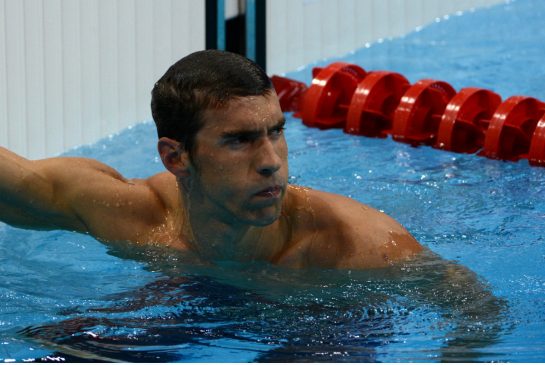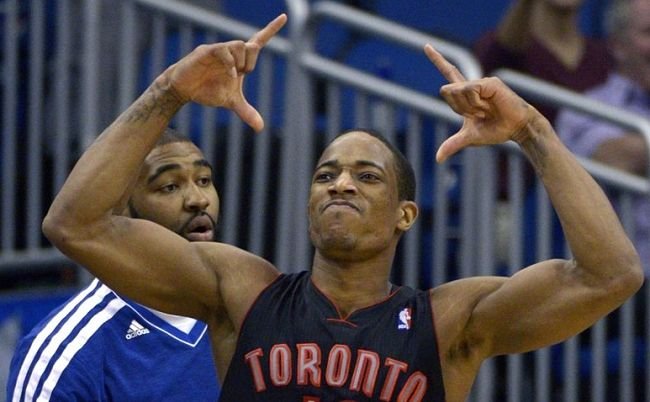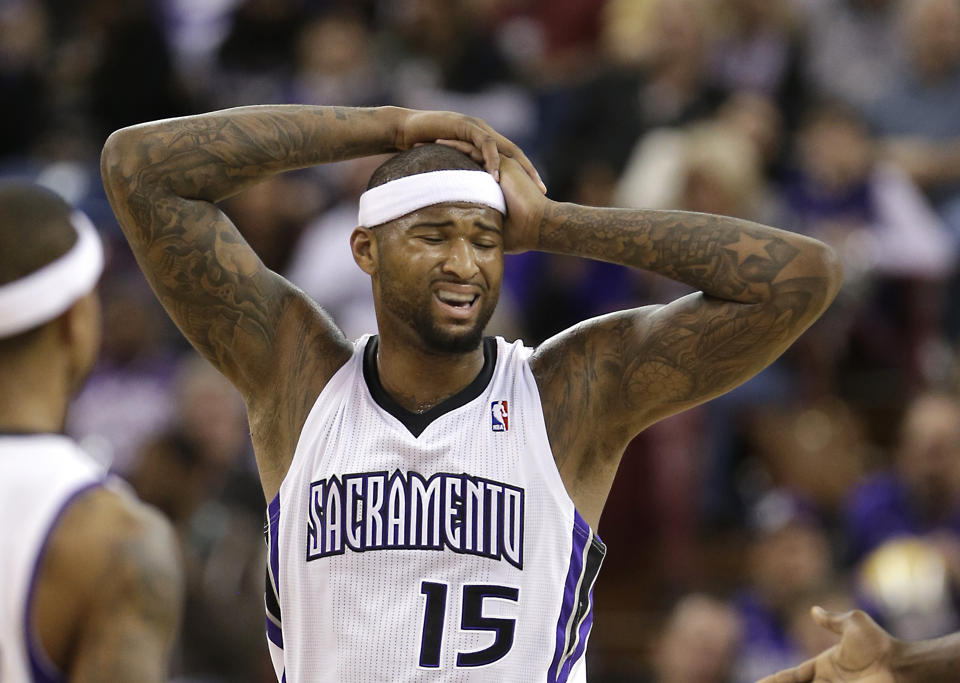The Toronto Raptors visit the Sacramento Kings tonight, and while Zarar did a good job setting the stage in the Gameday post, I thought it was worth a little more reflection. How far we’ve come.
On December 8, Rudy Gay was held out of the Raptors lineup against the Los Angeles Lakers as rumors swirled that he had been dealt to the Sacramento Kings. The following day, the trade would be made official – Gay, Aaron Gray and Quincy Acy were headed to Sacramento with Greivis Vasquez, Patrick Patterson, John Salmons and Chuck Hayes coming back as a return.
It was a win, if for no other reason than the added payroll certainty moving forward. It was also, however, expected to be the first in a series of tear-down moves to push the team firmly into the tank, which hasn’t at all been the case.
At the time of the deal, Tim Chisholm warned us that the trade may actually improve the team:
Regardless of how Salmons plays, though, this club has just done a pretty significant remodelling job on large swaths of their roster, and how the rotation shakes out will take a couple of weeks to determine. You can definitely expect Vasquez to get serious minutes, and Salmons will likely see time considering how shallow the wings are. Patterson fits ideally next to Valanciunas on offence, but Hayes fits better on defence, and lest we forget the Raptors already have two effective big men in Johnson and Tyler Hansbrough that have yet to give any reason to be unseated from their spots in the pecking order.
My focus, meanwhile, was primarily on the long-term impact of the deal and the trickle-down effect of more shots for the incumbent rotation players:
Gay’s absence creates further opportunities for the players left on the roster, specifically Jonas Valanciunas and Terrence Ross. The offense should become more fluid and balanced, with the only potential detriment coming if DeMar DeRozan is unable to navigate increased defensive attention. Still, there are more shots and more touches available now, and that’s not insignificant for a young, rebuilding squad.
…
Those are big savings, and they’re savings that could help Ujiri reshape the roster. Flexibility and cap space are transactional currencies that extend beyond attracting big-name free agents to Toronto.
But here’s the thing, as you’re well aware: the Raptors haven’t made further moves to bottom out, and whether it be from addition by subtraction or addition by addition, the team has gotten much better since the deal. They’re 26-22 overall, tops in the Atlantic Division and third in the Eastern Conference, and those rankings don’t look like mirages. They are a top-four team in the East – damning praise though that may be – and we’re looking at a possible playoff series with home court advantage.
In the immortal words of DeMar DeRozan, this team had the option to sink or float (I know it’s sink or swim, but he said sink or float), and they’re out here like Michael Phelps.
Basketball Reference’s Simple Rating System ranks the Raptors as the league’s 11th best outfit and the third best team in the East. ESPN’s Hollinger Power Rankings agree on both counts, and they miss the playoffs in just five out of 5,000 ESPN Playoff Odds simulations (hilariously winning the title 4.6 percent of the time). The defense ranks sixth overall, the offense 13th.
But even this lofty praise kind of skews how good the Raptors have been since the deal went down. Consider:
| Toronto Raptors | W | L | Ortg | Rank | DRtg | Rank | Net Rating | Rank |
|---|---|---|---|---|---|---|---|---|
| To Dec 7 | 6 | 12 | 101 | 19 | 102.1 | 16 | -1 | 19 |
| Since Dec 8 | 20 | 10 | 105.9 | 10 | 99.6 | 5 | 6.3 | 5 |
The trade of Gay coincided with a major spike in offense and an improvement on defense.They’re now an above-average offense and a nearly-elite defense. The former isn’t surprising given that Gay had performed so poorly (with high usage), well below his expected level of performance. The latter, however, is a bit more surprising considering Gay, when engaged, was one of the team’s best individual defenders. Terrence Ross has been embracing the stopper’s role and Hayes is a solid post defender, but none of the other acquisitions are major plusses on defense.
Perhaps head coach Dwane Casey simply feels more free to have the team rely on the system rather than Gay checking the opposing team’s best player. Maybe the improved offense has just flowed into better defense, with better effort and, since they’re scoring more frequently, fewer transition opportunities for opponents.
Specifically, the team went from allowing 20.7 3-point attempts and 23.3 free throw attempts per game to allowing 18.8 and 22.8, respectively. They also went from allowing 30.5 attempts a game within five feet and a 57.9 percent mark in that area to allowing 30.2 at a 55.4 percent clip. These are tiny gains on their own (two fewer threes, an extra stop in the paint, one less And-1 a game) but add up pretty quickly, hence the additional 2.5 points per 100 possessions (PPC) that the team is saving.
The primary story has been on offense, however, and it’s easy to see why; the narrative is simple. Gay was using 30.6 percent of the team’s possessions with a league-average player efficiency rating (PER) and one of the worst true shooting percentage imaginable (42.1 percent). Simply spreading those shots out to more efficient players was bound to improve the offense, while the less tangible benefits of better ball movement and a less obvious offensive scheme would also improve the team’s scoring rate.
And, well, yup:
| Toronto Raptors | Ortg | Rank | 3FGA/gm | FGA in 5ft/gm | FG% in 5ft | FTA/gm | Ast% |
|---|---|---|---|---|---|---|---|
| To Dec 7 | 101 | 19 | 21.4 | 30.4 | 53.30% | 25.6 | 49.20% |
| Since Dec 8 | 105.9 | 10 | 23.5 | 24.6 | 58.30% | 23.4 | 62.30% |
The two things that stand out the most are the additional two threes a game and the huge spike in assist rate. If we assume assist rate is a fair proxy for ball movement (and perhaps even “ease of baskets”), that spike pretty much explains everything you need to know about the post-Rudy Raptors. Yes, they’re getting to the rim and to the line slightly less, which is a drawback, but the positive is outweighing the negative in a major way.
At the individual level, it’s been Lowry who has had the biggest impact, using nearly three percent more of the team’s possessions while being the team’s most efficient scorer and best creator. DeRozan has used more possessions and doesn’t score all that efficiently, but he’s also improved his passing a great deal and rarely turns the ball over. Ross, Jonas Valanciunas and Amir Johnson have all had similar upticks in usage, and all three are using those possessions more efficiently than Gay was.
| Player | pre-Trade | pre-Trade | pre-Trade | post-Trade | post-Trade | post-Trade |
|---|---|---|---|---|---|---|
| Player | Usg% | TS% | Ast% | Usg% | TS% | Ast% |
| DeRozan | 26.7 | 52.3 | 11.3 | 30 | 51.1 | 18.3 |
| Lowry | 19.1 | 54.9 | 26.7 | 21.8 | 59.2 | 31.8 |
| Ross | 16.2 | 51.9 | 5.4 | 19.8 | 54.1 | 5.5 |
| Valanciunas | 18.4 | 51.2 | 3.7 | 20.1 | 57.5 | 3.7 |
| Johnson | 16.5 | 60.2 | 6.3 | 17.9 | 57.5 | 6.3 |
| Gay | 31.1 | 46.4 | 9.5 | – | – | – |
Of course, Gay himself has turned things around in Sacramento, which simple regression would have predicted (though probably not to this degree) . Even though the Kings are 16-32 overall and just 10-15 with Gay in uniform, they’ve got what they signed up for from him.
Here’s how all the players traded have fared:
| Player | pre-Trade | pre-Trade | pre-Trade | pre-Trade | post-Trade | post-Trade | post-Trade | post-Trade |
|---|---|---|---|---|---|---|---|---|
| Player | MPG | TS% | PPG | USG% | MPG | TS% | PPG | USG% |
| Gay | 35.5 | 46.8 | 19.4 | 30.6 | 33.9 | 61.1 | 20.7 | 25.9 |
| Acy | 8.7 | 54.2 | 2.7 | 14.5 | 15.6 | 56.9 | 3.4 | 9.5 |
| Gray | 5 | 64.4 | 1.3 | 17.8 | 10.9 | 43 | 1.7 | 12.2 |
| – | – | – | – | – | – | – | – | – |
| Patterson | 24.4 | 45.7 | 6.9 | 15.4 | 22.4 | 56.7 | 9.6 | 19.1 |
| Vasquez | 25.8 | 53.6 | 9.8 | 18.1 | 19.3 | 45.2 | 7 | 22.3 |
| Hayes | 11.2 | 47 | 2.1 | 10.4 | 14.4 | 46.2 | 2.7 | 11.3 |
| Salmons | 24.7 | 43.7 | 5.8 | 13.3 | 24.5 | 52.1 | 6.4 | 12.9 |
That’s a lot of numbers to say that Patterson and Gay (and Acy, to some degree) have been the beneficiaries, Vasquez has been the one lowlight (more on that Friday) and the others are just kind of there. (Okay, Salmons has been good, too, I begrudgingly admit while fully expecting that performance to regress soon.)
In any case, it’s a far different Raptors team that will take the floor on Wednesday night than the one Gay and company left behind. The game itself means little more than one of 82 on a schedule and a chance to secure a winning record on a five-game west coast road trip (seriously!), but it makes for a nice point of reflection.
Nothing was the same, basically.



